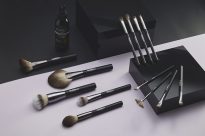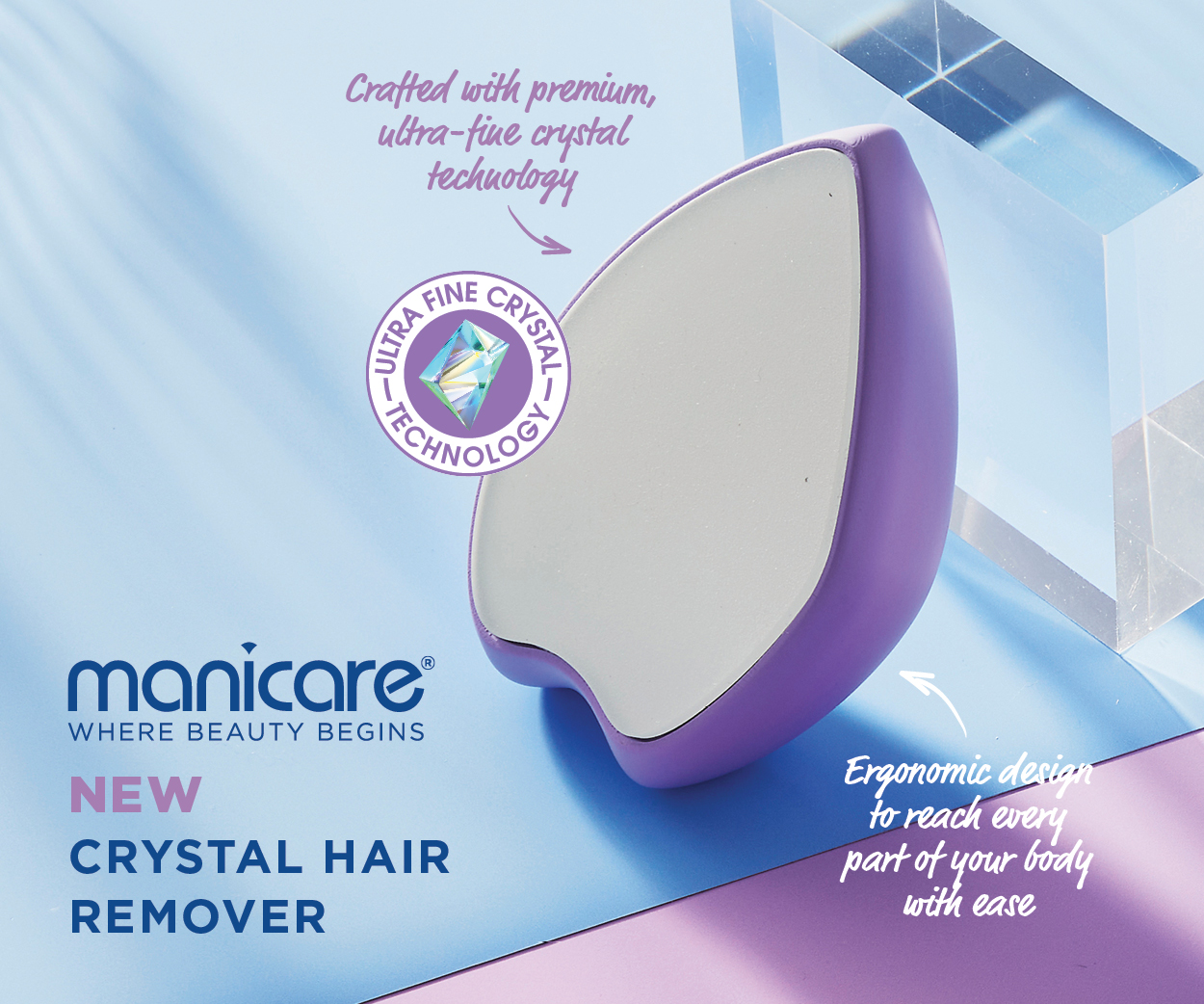Winter Skin 101
These colder seasons can leave our skin worse for wear, and in need of some serious TLC. We asked women’s wellness expert and former beauty editor Jenna Moore why and how our skin changes during this time, and what to do to restore it to a radiant, luminous glow. By Anja Kussler.
Come winter, our greatest skin concern is dehydration, when skin lacks water at a cellular level. This is firstly due to extreme temperature exposure – a combination of outdoor chills versus indoor heating, and hot baths and showers. “Depending on how cold it is, that’s when our skin may feel tight, dry and irritated,” explains Jenna Moore. “Alas, age also plays a role here as more mature skin is generally thinner and drier – as does our skin type: sensitive skin, for example, may appear red as it is impacted more severely by the elements.”
There is a number of other skin-ravaging factors that come into play during the colder months, Jenna explains. For one, there’s a lack of vitamin D due to fewer sunshine hours. “After all, vitamin D supports our skin barrier, by creating a natural moisture protectant. Being over-zealous on the cleansing front also takes its toll on post-winter skin – think harsh cleansing products and over-exfoliating,” says Jenna, who is also a nutritional awareness counsellor with a special focus on women’s midlife health: “Finally – and perhaps most importantly – suboptimal nutrition, stress, ageing and hormones all make a huge difference to the health of our skin, year round but especially in the colder season.”
The good news is, there is a lot we can do to boost and rehydrate post-winter skin, starting with the appropriate daily and nightly facial skincare regime, in the following order:
- Cleanse skin using a gentle, mild, creamy cleanser free from drying sulphates, or use micellar water, applied with a cotton pad.
- Exfoliate skin only once or twice a week max to get rid of dead skin cells, using a product that’s not too gritty and abrasive. If you use retinol products, which have a peeling effect, omit exfoliation altogether.
- If you are using a toner, make sure it’s alcohol-free as the latter is harsh on the skin. Or opt for a gentle facial mist or rose water to apply over cleansed skin.
- Hydrate: Dehydrated skin needs a hydrator, which attracts moisture to the skin. It is preferable to use humectants, which draw moisture from the environment to the epidermis or top layer of the skin. Gold standard hydrating ingredients include the following moisturising factors that are naturally present in our bodies: hyaluronic acid, which holds 1,000 times its own weight in water, as well as sodium PCA and ceramides. “Another couple of great hydrating ingredients are glycerin, a lovely safe anti-inflammatory, and niacinamide (vitamin B3),” Jenna adds.
- Seal it in: Occlusives (moisturisers) are heavier components that don’t actually deliver moisture but seal and lock moisture in, thereby serving as the skin’s “bodyguard”. Super-nourishing occlusives that Jenna recommends are shea, cocoa or mango butters, as well as almond, rosehip, evening primrose, fractionated coconut and jojoba oil. “The latter is not actually an oil but rather a wax ester that is very similar to the skin’s own natural moisture coating,” Jenna explains.
TIP: The above-mentioned occlusives can be used for both face and body, but fractionated coconut oil and oatmeal baths in particular work wonders for body skin. Just make sure the bath is not too hot as it will dry out the skin.
LET’S TALK ABOUT HORMONES
Now that we’ve established how to give some love to our skin topically, let’s take a peek at our hormones. Jenna emphasises that they can be our worst enemy but also our best friend when we fully understand their workings. “Hormones really drive everything – our emotions, brains, sex lives and even our skin – throughout every stage of our lives, from puberty right through to menopause.”
The main hormones we need to keep balanced as women (in the dry skin stakes) are oestrogen, progesterone, thyroid and cortisol. Oestrogen takes top priority as it contributes to producing collagen (plump skin), elastin (maintaining suppleness) and hyaluronic acid (to increase moisture).
Menstruation greatly affects our oestrogen levels, creating big highs and lows. “This is why our skin might be drier at the beginning of our monthly cycle skin,” Jenna explains. During pregnancy, women have high levels of oestrogen and progesterone, sometimes causing skin changes. Most experience amazing skin during this time, while others may have issues, such as uneven pigmentation. “One size does not fit all when it comes to hormones, as everyone’s individual makeup is different,” Jenna stresses. Then, towards the end of our fertile years (in peri-menopause, menopause and post-menopause), our progesterone levels drop while oestrogen “fluctuates like crazy as it makes its way out of the ovarian building”. This, Jenna adds, is when our skin begins to change significantly: small lines appear, we may experience sagging under our eyes and our skin becomes drier overall. “It’s when we really need to focus on getting our hormone ratio right.”
Cortisol – our stress hormone – is also crucial when it comes to skin health. “Whilst often deemed a baddie, it’s essential as it’s what motivates us to get up each morning to seize the day,” Jenna says. In an evolutionary sense, cortisol is our survival hormone, designed to protect us from physical danger by sending us into flight or fight mode. These days, however, we are more prone to “perceived” chronic low-level stress due to factors such as a high-powered job or complicated relationship rather than actual physical threats. “The thing is, our body can’t tell the difference and will react to any kind of stress with an inflammatory response, as it prioritises other things than hydrating our skin!”

An under-active thyroid (called Hypothyroidism) is another contributing factor. According to Jenna, it’s more common than we think, especially in women approaching their midlives. This leads to dehydrated, dull skin as a sluggish thyroid slows down blood circulation and interferes with toxins leaving the body. “It can be hard to determine the level of our thyroid functioning,” Jenna says. “That’s because standard tests are restricted to TSH, which can present as normal, even when your thyroid is defective. We highly recommend broad-spectrum T3, T4 and antibodies testing to determine optimum levels.”
On a final hormone note, Jenna points out the importance of the gut! “The gut, hormones and skin health are all intrinsically linked, and need to work well together to complete our bodies from the inside out.” More specifically, she explains that good and bad bacteria need to populate the gut to make our digestion optimal and our hormones thrive, cleaning out any debris through our hormonally-driven liver and most hard-working organ and detoxifier. If we load our body with Xenoestrogens (found, for example in chemically laden skincare products that mimic “real” oestrogen), it will lead to toxins recirculating through our organs (including our skin) rather than being filtered out. That’s why it’s so important to choose skincare products devoid of chemical nasties.
“Hormones work in synergy; they need to work like a symphony. If one hormone is out of kilter, it will show on our skin. Skin shows a lot about what goes on inside our bodies.” – Jenna Moore
So how do we deal with our raging hormones to rectify our skin? Chemical skincare ingredients aside, Jenna says it’s essential to avoid (or at least reduce) caffeine, fizzy drinks, junk foods, as well as sugars and refined carbs, which turn to sugar in the body. “Think ‘anything in a packet’, in other words, processed foods like procured meats and ‘the whites’ (pasta, white bread, etc).” In order to be able to cut the wheat from the chaff, she highly suggests becoming an avid label reader when doing our food shopping. The fewer ingredients, the better; the longer the list, the more likely it to include “red flag” ingredients such as additives, thickeners and emulsifiers.
Jenna’s primary rule of thumb for improving winter skin internally is ERF: Eat Real Foods. These include vegetables and fruit as they have high water content and are rich in fibre and antioxidants, which will help clear out toxins. “In fact, the single best thing you can do for your skin is to up your intake of green “leafies” like spinach, kale and leeks (five to seven serves – or ten if possible). If you follow this protocol just for seven days, you will have visibly laid the foundations for hydrated, luminous skin just like that!”
Another way to improve winter skin is through exercise. Movement, whether in the form of a gentle beach walk, yoga practice or more intense workout, will improve blood circulation and send nutrients to the appropriate organs, including our skin. Getting plenty of good-quality sleep is also essential to help with repair, to help prevent dull, flakey skin. Breath work is another crucial and often underestimated factor, Jenna mentions. “Most of us shallow breathe, whereas a focus on deep diaphragmatic breathing sends much-needed oxygen to our skin.”
Finally, a note about vitamins and minerals that are wise to include daily to optimise winter skin. While Jenna stresses that it’s preferable to get them through food, due to our largely nutrient-lacking 21st century produce, they may be added in form of a high-quality supplement.
- Omega 3 essential fatty acids are beautiful for boosting dehydrated winter skin. Great sources to include in our daily diet are hempseed, extra virgin olive, fish and flaxseed oils, as well as blackcurrant and sunflower seeds.
- Vitamin B complex: This amazing vitamin family is a skin godsend and works in a number of ways! Vitamin B1 (thiamine), B2 (riboflavin), vitamin B3 (niacinamide, which we mentioned previously) and vitamin B5 (pantothenic acid) are all dry skin helpers. And then there are vitamin B6 (for hormone balance) and 7, 9 and 12 to help ease skin dullness. If you’re vegetarian or vegan, adding nutritional yeast to your meals will give you the vitamin 12 boost that’s lacking in plant-based diets.
- Vitamin C is essential for the formation of collagen and elastin – think citrus fruit or again, those leafies!
- Vitamin D3 delivers the same form of vitamin D that we get from the sun. However, Jenna says the latter is still the best source, so factor in regular walks on those sunny winter days!
- Vitamin E offers major skin protection and acts as a wound healer – it’s perfect for adding to your hydrator or moisturiser.
- Vitamin A is a famous member of the retinol family and is wonderful used topically for ageing skin to help prevent cellular damage. They are also worth ingesting, either through animal products such as organ meat, or red and orange veggies like kumara, tomatoes or carrots, as well as green leafies.
- Zinc is an essential nutrient that is present in about five percent of our outer skin layer and is highly anti-inflammatory. It combats dryness, redness and helps build collagen. Red meat, shellfish and legumes are some food sources.
- Astaxanthin has recently emerged as a new skin superstar – it’s a component found in salmon, shrimps and algae that suppresses water loss from the skin.
Overall, Jenna concludes that looking after our skin is a holistic practice that positively affects our entire being, physically, emotionally and mentally. “And beautiful skincare, when combined with internal self-care, then becomes like the (sugar-free!) icing on the cake.”
Jenna Moore is a women’s health researcher, author, wellness coach and nutritional awareness counsellor who specialises in helping women “find happy hormones, happy weight and happy lives”, especially in their mid-lives. https://youology.co.nz/







